Join More Than 50,000+ Subscribers and get latest camera news and rumors
NEW CAMERA VIDEOS ON YOUTUBE
|
By admin, on May 25th, 2023
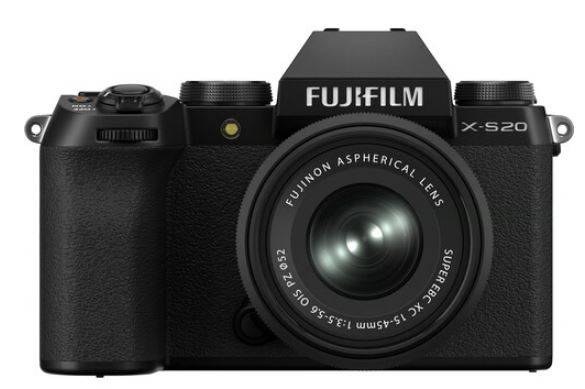
Fuji announced a new X-X20 camera today, the successor of the Fuji X-S10 camera, Although the camera features the same sensor, but the overall specs of the camera are upscaled, after the intro of the new X-processor 5. Take a look at the Major features of the camera
Fuji X-S20 Full Specification
- 26MP X-Trans BSI-CMOS sensor
- 5-axis in-body image stabilization (CIPA-rated to 7 stops)
- On-sensor phase detection
- 3″, 1.84M-dot fully articulating touchscreen
- 2.36M-dot OLED electronic viewfinder
- 20 fps burst shooting (up to 30 fps with a crop)
- DCI and UHD 4K at up to 30p with 10-bit F-Log and F-Log2 support
- External mic and 3.5mm headphone socket
- 750 shots per charge using LCD
- USB power delivery support
- Single UHS-II card slot
- Wi-Fi + Bluetooth
- Compatibility with FAN-001
Fuji X-S20 Price
The Fujifilm X-S20 will be available from June 29th with a recommended price of $1299 body-only.
GetFuji X-S20 camera from B&H Store | Amazon.com
Fujifilm X-S20 Press Releeas
Fujifilm Launches FUJIFILM X-S20 Mirrorless Digital Camera
High-Capacity Battery, High-Performance Autofocus, and Advanced Video-Recording Functions, a Powerful Story-Creation Tool Designed for the Active Content Creator
VALHALLA, N.Y., May 24, 2023 – FUJIFILM North America Corporation announced today the launch of its FUJIFILM X-S20 mirrorless digital camera (X-S20). With a lightweight, compact form factor reminiscent of its predecessor, the FUJIFILM X-S10, X-S20 brings new features including AI-based subject-detection autofocus (AF), the capability to record 6.2K/30P video, and stream 4K/60P video natively through USB-C.
“X-S20 is truly a dream camera for any content creator looking to take their photos and videos creation to the next level, but especially for the ones that are documenting their lives, traveling the world, or streaming their stories online.” said Lisa Baxt, marketing director, Electronic Imaging Division, FUJIFILM North America Corporation. “It offers premium image quality and advanced portability, catering to a variety of image creation styles ranging from casual self-portraits to full-fledged photography and videography. With content creators turning to digital cameras more than ever before, we are confident that X-S20 will be well received with users pushing long-form content to platforms, like Twitch, especially since no fees are required to unlock the feature.”
Main features:
High image quality and high-performance AF
• X-S20 is equipped with the back-illuminated 26.1MP sensor “X-Trans™ CMOS 4” and the
high-speed image processing engine “X-Processor 5” to produce high-quality images while
keeping power consumption lower than its predecessor model, X-S10.
• X-S20 features subject-detection AF developed with deep learning/artificial intelligence (AI) technology. In this case, AI is used to detect animals, birds, cars, motorcycles, bicycles, airplanes, trains, insects and drones. The evolved AF prediction algorithm enables stable focusing even in AF-C mode.
• The AUTO mode, which automatically selects optimum settings according to scenes, is complemented with the new AUTO Subject Detection function, which automatically detects and tracks a subject while keeping it in focus, allowing the creator to produce high-quality stills and videos with ease.
• X-S20 comes with 19 Film Simulation modes including “Nostalgic Neg,” characterized by
high saturation and soft tonality. Users can use Film Simulation presets, designed for various subject types and scenes to produce a photographic film look and feel.
High-capacity battery and high-performance in-body image stabilization (IBIS) mechanism in a lightweight form factor
• X-S20 features the X-S Series’ signature large grip for reliable handheld stability while
keeping the body compact and lightweight, weighing in at just 1.08 lbs. (491g).1
• The use of the high-capacity battery, NP-W235, has more than doubled the number of frames in Economy Mode to approximately 800 compared to that of the previous X-S10 model.
• X-S20 is equipped with a five-axis IBIS mechanism that offers up to 7.0-stops2, making it easy to create images or video hand-held, even at night or in low-light conditions.
• X-S20 features a 2.36-million-dot Electronic Viewfinder (EVF) with 0.62x magnification as well as a 1.84-million-dot rear LCD monitor with a vari-angle structure that can be positioned in a range of angles, making self-portraits easy. The camera can be also combined with the FUJIFILM Tripod Grip, TG-BT1, for vlog production.
6.2K/30P video recording and other extensive video functions including the new Vlog Mode
• X-S20 can record 6.2K/30P 4:2:2 10-bit video internally and supports extensive video
functions that include capabilities, like hi-speed 1080/240P slow motion and 4K/60P streaming through USB-C.
• X-S20 features F-Log2 for recording video in the expanded 13+ stop dynamic range for enriched tonality, adding freedom in post-production creativity.
• When combined with an ATOMOS HDMI device, RAW video output from the X-S20 can be recorded as 12-bit Apple ProRes RAW at resolutions up to 6.2K and frame rates up to 29.97fps. When combined with Blackmagic Design Video Assist 12G, RAW video output from X-S20 can be recorded as Blackmagic RAW at resolutions up to 6.2K and frame rates up to 29.97fps.
• X-S20 features a 3.5mm microphone / earphone jack for broad compatibility with today’s available audio tools, despite its compact and lightweight body. Furthermore, the new Vlog Mode has been introduced to facilitate Vlog production.
• A USB-Type C cable can connect the camera to a computer to use as a webcam without
the need for additional software3. Alternatively, content creators can utilize OBS with X- S20 to stream 4K/60P video directly from the camera to the online streaming platform of their choice. Film Simulation modes are available even during live streaming or online meetings. Image settings can be adjusted even while the camera is connected to a computer.
Pricing and Availability:
FUJIFILM X-S20 mirrorless digital camera body and camera body with lens kits will be available from authorized FUJIFILM dealers in the United States on or around June 29th, 2023.
FUJIFILM X-S20 Mirrorless Camera Body in Black will be available at a manufacturer’s suggested retail price of $1,299.95 USD and $1,749.99 CAD.
FUJIFILM X-S20 Mirrorless Camera Body in Black with the FUJINON XC15-45mmF3.5-5.6 OIS PZ Lens Kit will be available at a manufacturer’s suggested retail price of $1,399.95 USD and $1,899.99 CAD.
FUJIFILM X-S20 Mirrorless Camera Body in Black with the FUJINON XF18-55mmF2.8-4 R LM OIS Lens Kit will be available at a manufacturer’s suggested retail price of $1,699.95 and $2,299.99 CAD.
By admin, on May 24th, 2023
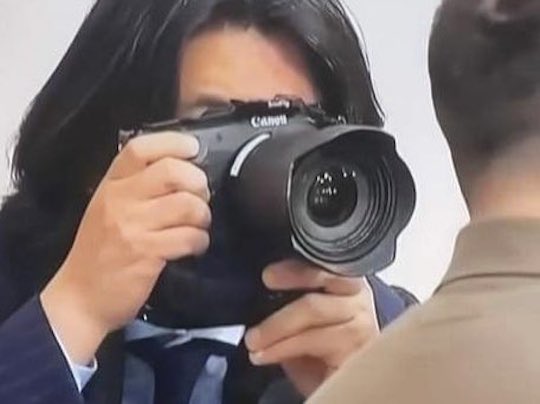
There are a lot of rumors that the Canon R1 camera was recently spotted at the Hiroshima G7 summit. We have many blog posts and videos going viral on this topic. But if you look at the image closely, you will see a Canon R3 camera-type body attached to a small rig 3884.
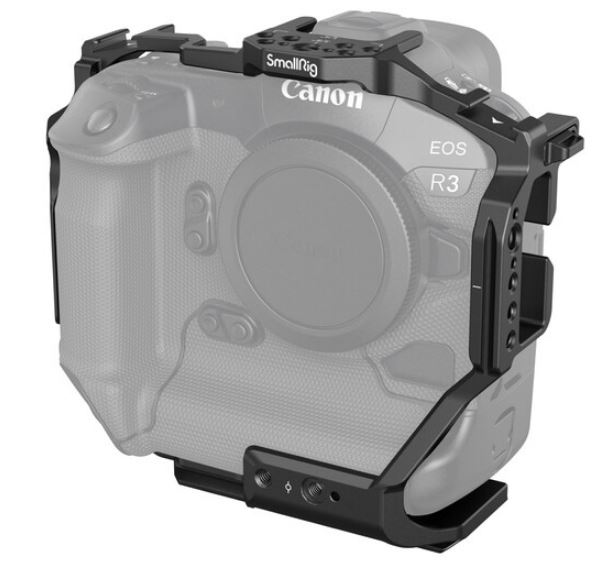
Many websites and videos are claiming that the top design of the camera has been changed and that’s the reason it is a Canon R1 camera. But, unfortunately, it is just a Canon R3 camera with a small rig cage and nothing else. We cannot find any significant major design difference between the two.
Get LIVE RUMORS –> FACEBOOK | TWITTER | INSTAGRAM to get live news + Canon rumors 24X7
By admin, on May 24th, 2023
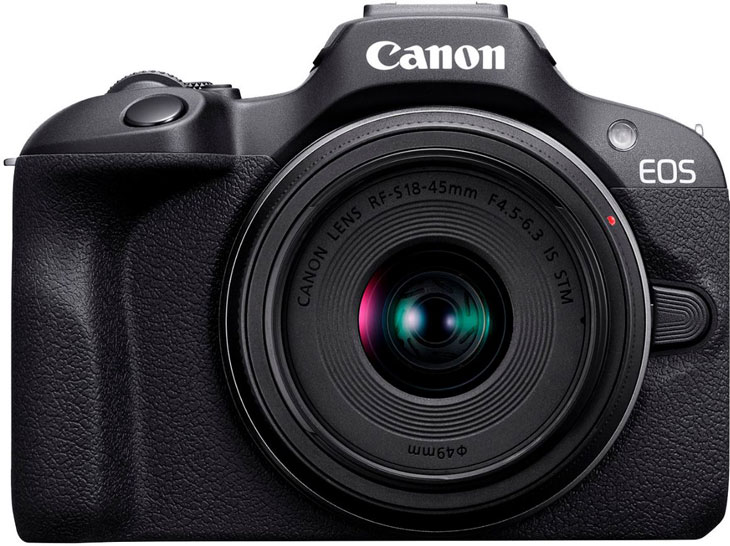
Canon R100 camera announced the Canon R100 camera features 1st generation of DPAF sensor and DIGIC 8 image processor. 4K video with crop and fixed display screen, so it is not made for content creators in any way.
Canon R100 Full Specification
- 24.1MP APS-C CMOS Sensor
- DIGIC 8 Image Processor
- 4K 24p Video with Crop, Full HD 60p
- Dual Pixel CMOS AF with 143 AF Zones
- 6.5 fps Electronic Shutter
- 2.36m-Dot OLED EVF
- 3″ 1.04m-Dot LCD Screen
- Creative Assist Mode
- Wi-Fi and Bluetooth with SD Card Slot
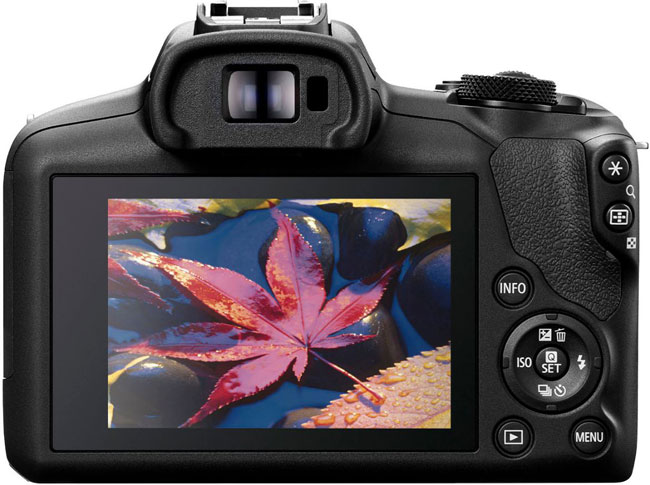
Canon R100 Price
- Body: $479
- Lens kit: $599
- Double zoom kit: $829
Canon R100 Press Release
Canon Introduces its Most Affordable, Compact, and Lightweight EOS R Camera Ever: The EOS R100
The Company Also Announced the Wide-Angle “Pancake” Style RF28mm F2.8 STM Lens
MELVILLE, N.Y., May 24, 2023 – Canon U.S.A., Inc., a leader in digital imaging solutions, is excited to announce the launch of the EOS R100 camera and RF28mm F2.8 STM lens, two new affordable compact and lightweight tools for entry-level and emerging content creators to elevate their skills.
The Canon EOS R100 camera was designed for new, first-time mirrorless camera or existing interchangeable camera users who previously enjoyed EOS Rebel or EOS M cameras. The camera touts key features such as a 24.2 megapixel APS-C size sensor, the DIGIC 8 image processor, 4K (Cropped) and Full HD (Full-Width) video at up to 24 and 60 frames-per-second respectively, Autofocus with eye and face detection, and Bluetooth™ and Wi-Fi® connectivity capabilities. For users who are making the EOS R100 their first interchangeable lens (ILC) camera, a significant advantage over using a smartphone camera will be lens selection. The EOS R100 is compatible with the complete lineup of RF and RF-S lenses, and EF and EF-S lenses can be utilized when using one of three available Canon EF-EOS R mount adapters (each sold separately). This selection of lenses includes the Canon RF28mm F2.8 STM lens, which was also announced today.
The Canon RF28mm F2.8 STM is a “pancake” style, value lens that targets a wide variety of users, from amateur to enthusiast full-frame and APS-C camera users. Key features of the new lens include:
- Minimum focusing distance of 9.1 inches (0.23m) and a maximum magnification of 0.17x
- Retracting feature that helps to shorten the overall length of the lens
- Circumferential manual focus mode/control ring selector
- Gear-type STM motor providing smooth autofocusing while capturing video
- Built-in Control Ring provides quick access to multiple camera controls
- 7-blade circular aperture helps to provide beautifully blurred background and bokeh
Pricing and Availability
The Canon EOS R100 camera is scheduled to be available in July 2023 for an estimated retail price of $479.99 for body only, $599.99 with the RF-S18-45mm F4.5-6.3 IS STM lens, and $829.99 with the RF-S18-45mm F4.5-6.3 IS STM and RF-S55-210mm F5-7.1 IS STM lenses.
The RF28mm F2.8 STM lens is scheduled to be available in July 2023 for an estimated retail price of $299.99.
By admin, on May 21st, 2023
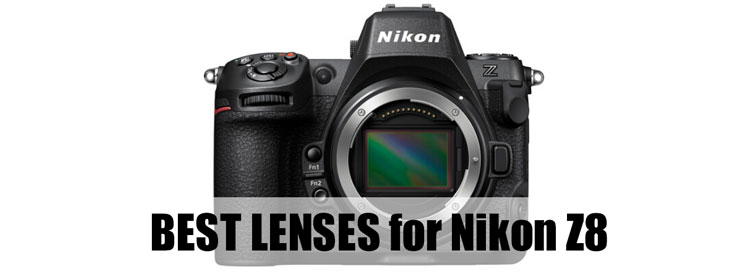
Nikon Z8 Best Lenses: The Nikon Z8 camera features almost the same specifications that we have seen in the Nikon Z9 but at a very reasonable price tag. To get the maximum output from the Nikon Z8’s 45-megapixel stacked sensor, you have to buy the best lenses available with the highest resolving power.
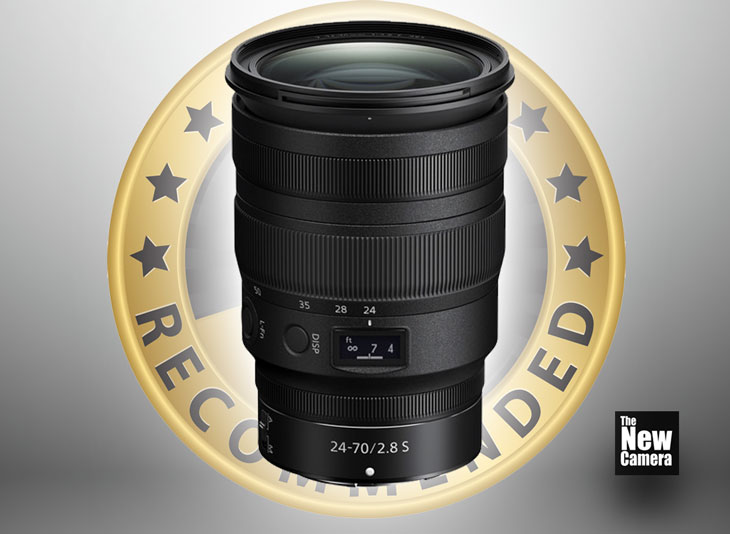
Get Nikon Z 24-70mm F2.8 Lens from Amaznon.com | B&H Store
1. Nikon Z 24-70mm f2.8
The best lens for the Nikon Z8 camera is the Nikon 24-70mm f/2.8 S. Since we are getting one of the industry’s best sensors in our hands, it’s highly recommended to match up the lens too. The first recommendation is the Nikon 24-70mm f/2.8 S. This lens features a constant f/2.8 aperture and delivers amazingly sharp output throughout the focal range with creamy bokeh, one of the most sharp and versatile lenses present to date, this lens will cover your 99% requirements.
The biggest reason behind recommending this lens is that you can shoot almost anything with it – starting from wide-angle landscapes to longer focal-length portraits. This is one of the most versatile and sharpest lenses Nikon has ever made for full-frame cameras.
Not only optically, but the lens’s autofocus performance is also top-notch. The lens uses 2 AF drive units synchronized to deliver extremely fast and accurate AF results – even when you are using your camera at 120 frames per second or when you are using it at 20 frames per second. This lens is bound to give perfect results when paired with Z9 or Z8
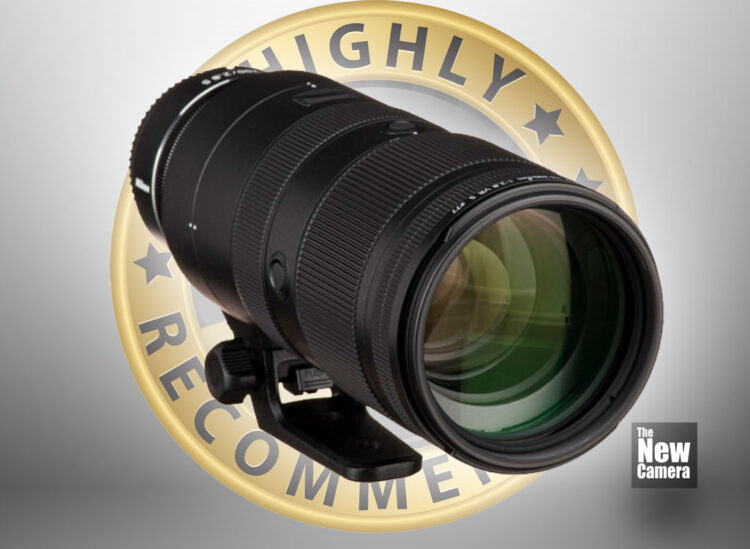
Get this Lens 70-200mm F2.8 lens from Amazon.com | B&H Store
2. Nikon 70-200mm f2.8s
The Nikon 70-200mm f2.8s lens produces incredibly sharp pictures and extracts the maximum amount of detail in your images. It is one of the best lenses to pair up with your Nikon Z8 camera. Practically no color fringing or chromatic aberration is visible in this lens. The lens is distortion-free and lens vignetting is also very minimal and can be easily corrected in post-processing.
The build quality of this lens is superb and made up of a metal body covered with rubberized material. It is extensively weather-sealed and able to deliver quality equal to its price tag.
The LCD display screen of the lens is not that much usable since we don’t have the habit of looking at the lens LCD. Maybe that’s one of the reasons I personally find the display not that much usable for me. Overall, the lens is worth every penny.
Finally, let’s talk about autofocusing performance. When paired up with a Nikon Z8 or Nikon Z9 camera which uses deep learning algorithms, the lens’s autofocusing system will improve with time. At the same time, the Z8 is capable of doing 120 AF calculations per second and supports burst speed up to 120 frames, and your lens is fully capable of synchronizing the AF performance even when shooting at max burst speed.
The image stabilization of this lens is highly reliable and you can shoot amazing pics handheld without any noticeable blur even at very slow shutter speeds when shooting at 200mm.
Although the price of this lens is approximately $2600, I have to say this lens is very reasonably priced
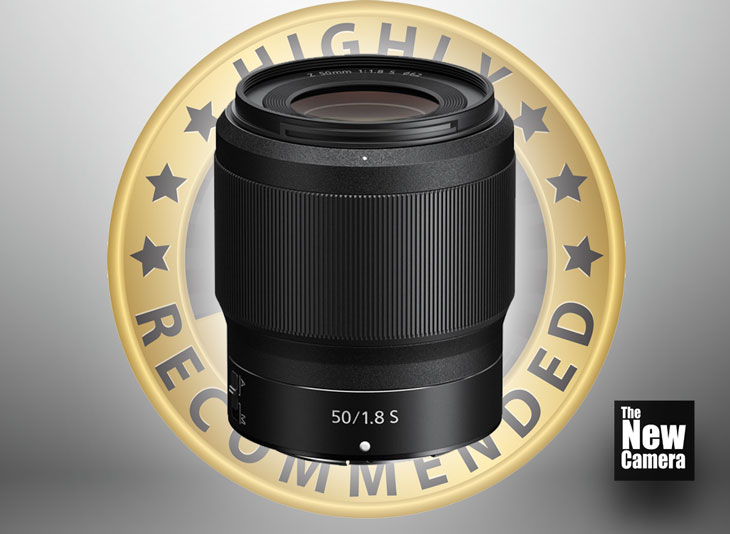
Get this Z 50mm F1.8 lens B&H Store | Amazon.com
3. Nikon z50 mm f 1.8s
Why we say the 50 mm f 1.8s is the best portrait lens Nikon ever made, the reason behind is very simple. The lens f1.8 aperture can give you a focal plane of only 10 degrees from 10 feet away so you have an amazing ability in your hand to shoot beautiful background blur in any situation.
F1.8 completely eliminates the requirement of additional light, and if you are a natural light shooter you will be blown away by the quality you will have from this lens. And do note that this lens is very sharp even at a wide open aperture.
If you are a professional portrait shooter or love to capture candid shots in natural light this is the best lens your money can buy and we highly recommend you to get the 50 mm f 1.8 lens for your Nikon Z8 camera.
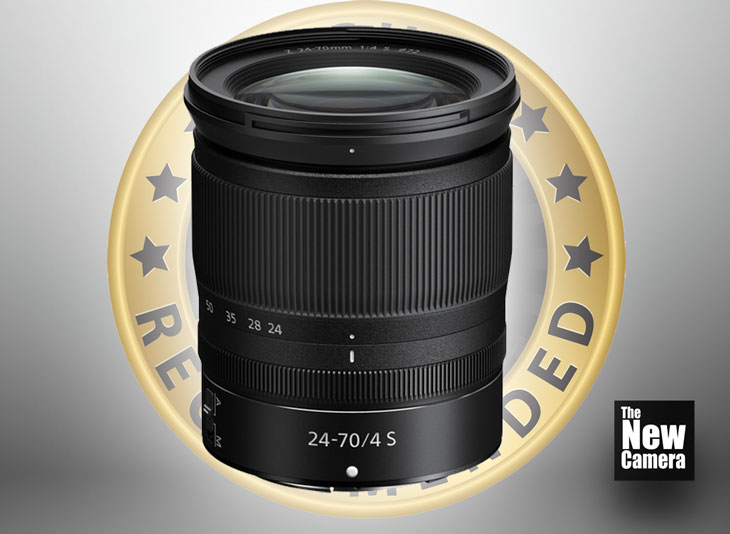
Get this lens from Amazon.com | B&H Store
4. Nikon 24-70mm F4
Now if you are running out of budget after getting your Nikon Z8 camera and wish to have a perfect all-around lens, then undoubtedly the 24-70mm f/4 lens is the best choice.
24 to 70 F4 lens is also very sharp, but you will miss the deep creamy bokeh (background blur) of the Z 24-70mm 2.8. But, keep in mind this price, you are getting optical images stabilization to which pairs of Nikon z8 6 stops of IBIS
This lens is perfect for shooting landscapes as well as streets, this is the best budget kit lens for your Nikon z8 camera
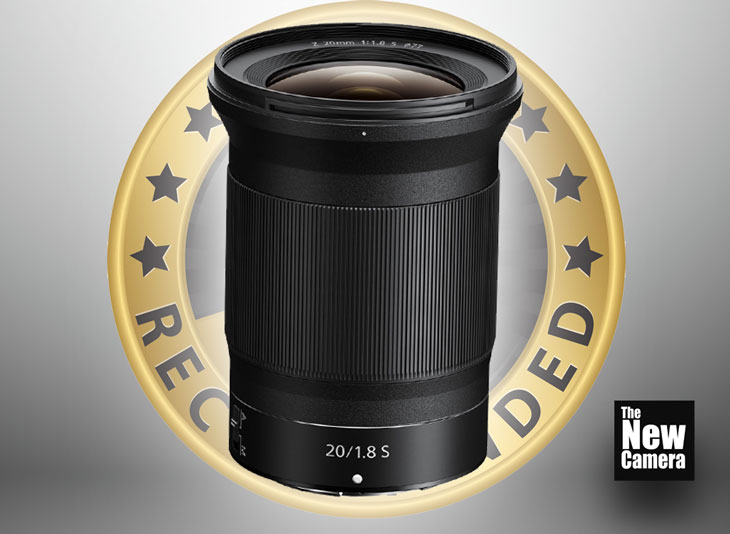
Get this lens from Amazon.com | B&H Store
5. Nikon Z20mm f1.8s
The best and the most sharpness prime lens I have used to date, It has incredible sharpness with no distortion across the field of view. I highly recommend this Nikon glass for anyone needing this focal length for landscape or astrophotography work. AT f/1.8 it is very sharp at center. Sharpness drops just a little at the corners. Stopping it down to f/2.8 improve center sharpness. At f/4 it has perfect sharpness corner to corner. It’s much easier to balance on-camera flash with dim available light with a large aperture lens because shutter speeds don’t have to be so long. I was at 1/40 @ f1.8 @ ISO 4000 most of the night. So, for low-light ultrawide photography and video, if ur budget doesn’t allow u to have nikon 14-24mm F2.8, instead of getting 14-30mm F4 get the 20mm F1.8.
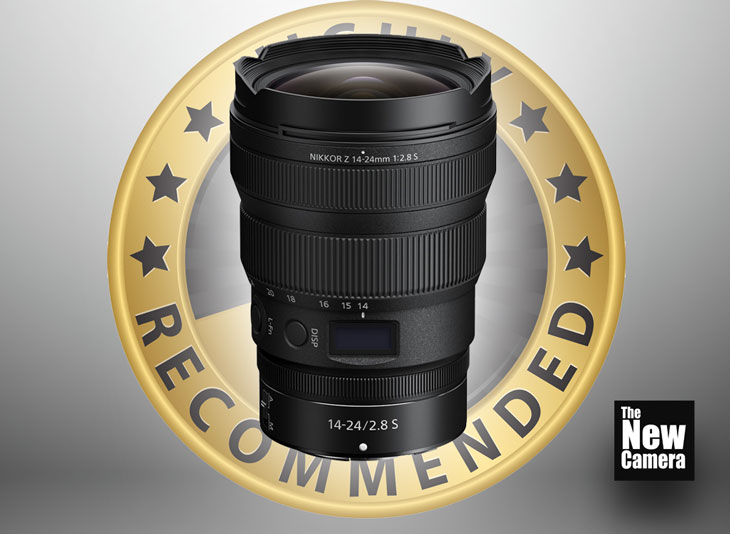
Get Nikon 14-24mm F2.8 Lens from Amazon.com | B&H Store
6. Nikon Z 14-24mm f/2.8 S
The 14 to 24 mm f/2.8 lens is the best lens for landscape and architecture photography, as well as for advanced cinematographers.
The 14 to 24 mm lens in Nikon is a part of a holy trinity lens which includes the 24 to 70 mm f/2.8 and the 70 to 200 mm f/2.8. The rest of the two lenses we have already discussed, now let’s talk about the 14 to 24 mm f/2.8.
This lens is the sharpest lens at this focal length in Nikon’s lineup, and one of the best ultra-wide zoom lenses present in the market. The image quality of this lens is super impressive even at 14 mm wide and covers approximately 115 degrees of view.
If you don’t need that f/2.8 aperture at this wide range, and many professionals never use such a shallow depth of field while shooting landscapes and architecture, then the best investment will be the 14 to 30 mm f/4 lens. It will save you $1000, and at the same time, you can use standard 82 mm filters with this lens which are easily available, unlike the 14 to 24 mm f/2.8 which requires 112 mm filters.
So if your budget allows and you want to have an ultra-wide zoom lens, then you should go with this. The only issue that I have faced with this lens is in finding its proper filters since it has a very large thread of 112 mm.
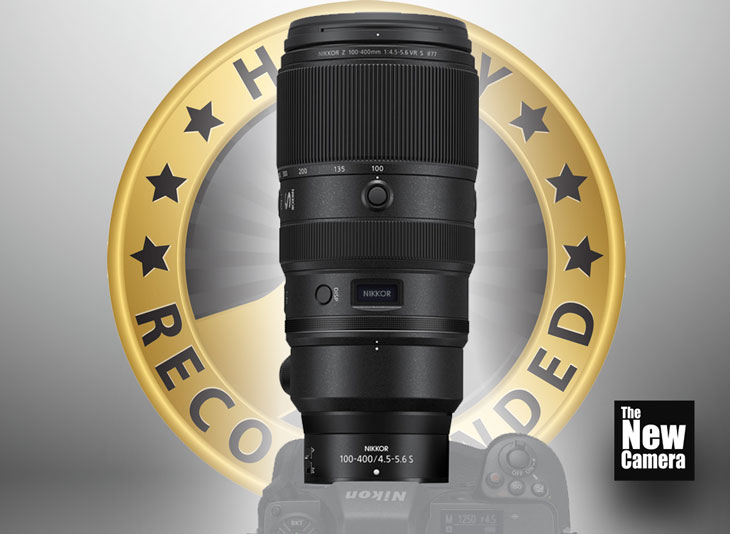
Get Nikon 100-400mm Lens this Lens from Amazon.com | B&H Store
7. Nikon Z 100 to 400 mm f/4.5 to 5.6
The Nikon Z 100 to 400 mm f/4.5 to 5.6 lens is the best lens for sports and wildlife photography under budget.
This is one of the best zoom lenses Nikon has ever made for Z Mount cameras. Despite having a variable aperture, the lens performs extremely well throughout its entire focal length. The sharpness of this lens is noticeable, and I highly recommend you to use this lens with Nikon Z cameras with a 45 MP sensor due to its high resolving capability.
The 100 to 400 mm lens is relatively compact compared to the lenses that we have in the DSLR era. At the same time, it’s lightweight, weighing just over 3 lbs or 1400 grams, and you can easily handhold this lens while shooting wildlife or sports. The VR (Vibration Reduction) of this lens synchronizes with your camera’s in-built sensor-shift image stabilization to provide you greater stability.
The lenses that you should avoid
- NIKON 28-75MM F2.8 RXD One lens that you should avoid is the Tamron rebranded 28 to 75 mm f/2.8 lens with the Nikon camera since it’s the first generation of lenses that Tamron is still making for Nikon Z mount cameras. The first generation of lenses doesn’t have as much resolving power as the G2 has right now. So if they release the second generation of their 28 to 75 mm f/2.8 lens, then it’s okay, but right now, the first generation of the 28 to 75 mm f/2.8 is not that good for resolving higher resolution sensors like the Nikon Z8.
- NIKON 17-28MM F2.8 RXD The next lens you should add is the Tamron rebranded 17-28 mm f/2.8 lens. Again, this lens is perfect for lower resolution cameras like the Nikon Z6 Mark II, but when we talk about cameras like the Nikon Z7 Mark II, Nikon Z8, or even Nikon Z9, these cameras have a 45 MP high-resolution sensor and need high-grade optics to resolve it properly. For that reason, I am not recommending the Tamron 17-28 mm lens for the Nikon Z8 camera.The best alternative is the Nikon 14 to 24 mm f/2.8, or if your budget doesn’t allow it, then you should go with the 14 to 30 mm f/4.
- 14-24MM F2.8 – Finally, the third lens that you should avoid is for cost-related reasons. As we have mentioned above, the 14 to 24 mm f/2.8 lens is costly and the best alternative to it with higher resolving capability is the 14 to 30 mm f/4. So if your budget allows and you feel that you need a max aperture ultra-wide zoom lens, then it’s okay to buy the 14 to 24 mm. Otherwise, we highly recommend that for a Nikon camera you must go with the 14 to 30 mm f/4 lens and save yourself a thousand dollars.
By admin, on May 19th, 2023
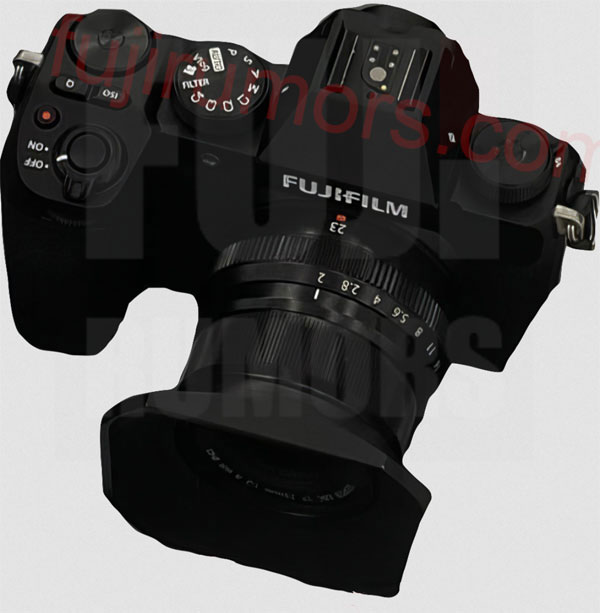
Finally, we have the leaked image of the upcoming Fujifilm X-S20 camera. Although the still image is not very clear and contains a huge watermark, despite that we are able to see the button labels on the camera and its overall design.
The X-S20 has a “Vlog” mode added to the mode dial, and the positions and shapes of the Q and ISO buttons have changed slightly, but overall it seems to follow the design of the X-S10.
Fuji X-S20 Design Details
- Vlog icon printed on the mode dial
- The SP icon that was on the mode dial is gone
- The ISO and Q buttons are closer together and look more protruding
Fuji X-S20 Specification
- 26.1MP APS-C X-Trans BSI CMOS 4 Sensor
- X-Processor 5 Image Processor
- 5-Axis In-Body Image Stabilization
- DCI/UHD 6k at 30 fps, 4K at 60 fps, Full HD at 240 fps
- 425-Point Hybrid AF System
- 2.36m-Dot 0.62x OLED EVF
- 3.0″ 1.62m-Dot Vari-Angle Touchscreen
- Battery Life: Up to 420 shots per charge
- Fuji X-S20 will arrive on May 24, 2023
Fuji X-S20 Price
Fuji X-S20 Overheating
Follow us on our social pages FACEBOOK | TWITTER | INSTAGRAM, –> See More Fuji Rumors Or subscribe to us via Email
source Fujirumor
By admin, on May 19th, 2023
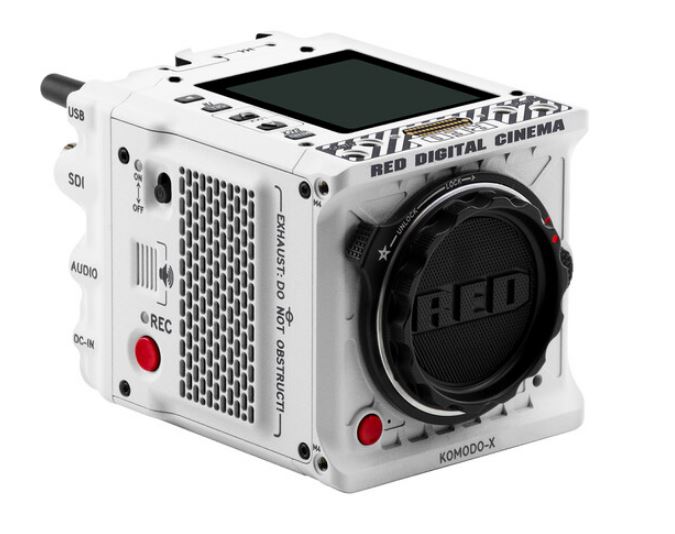
Introducing the Revolutionary KOMODO X 6K Digital Cinema Camera: A Game-Changer in Cinematography
[Delhi, India] – TheNewCamera.com is thrilled to announce the arrival of the highly anticipated KOMODO X 6K Digital Cinema Camera by RED Digital Cinema. As the leading authority in the world of cameras and photography.
The KOMODO X 6K Digital Cinema Camera represents a significant leap forward in camera innovation, offering unparalleled image quality, versatility, and performance. With its cutting-edge features, this camera empowers creators to push the boundaries of their art and capture breathtaking visuals like never before.
Key features of the KOMODO X 6K Digital Cinema Camera include:
Exceptional Image Quality: The camera boasts a 19.9MP Super35 global shutter CMOS sensor, delivering stunning 6K resolution footage with exceptional detail and dynamic range. Filmmakers can capture the subtlest nuances, vibrant colors, and intricate textures, resulting in truly cinematic masterpieces.
Compact and Lightweight: RED has designed the KOMODO X 6K Digital Cinema Camera to be remarkably portable without compromising on performance. Its compact form factor and lightweight design make it ideal for on-the-go shooting, whether it’s on location or in tight spaces, allowing filmmakers to capture their vision with ease.
Versatile Mount System: The KOMODO X 6K Digital Cinema Camera features the innovative RF lens mount, offering compatibility with a wide range of lenses from RED and other manufacturers. This flexibility empowers filmmakers to choose the perfect lens for each project, enabling them to achieve their desired visual style and creative vision.
Proven RED Workflow: Building on RED’s renowned heritage, the KOMODO X 6K Digital Cinema Camera seamlessly integrates into the existing RED ecosystem, providing a streamlined workflow for professionals. Filmmakers can confidently utilize RED’s powerful post-production tools, including REDCINE-X PRO software, to maximize the potential of their footage and bring their creative vision to life.
Commenting on the launch, [admin] at TheNewCamera.com, said, “We are incredibly excited to see the arrival KOMODO X 6K Digital Cinema Camera. It’s groundbreaking features, Hybrid AF capability with RF Lenses and compact design make it a must-have tool for both aspiring and professional filmmakers. With the KOMODO X 6K, creators can unlock their true potential and elevate their storytelling to new heights.”
The KOMODO X 6K Digital Cinema Camera is now available for purchase exclusively at B&HStore .com.
About TheNewCamera.com:
TheNewCamera.com is a leading online destination for camera enthusiasts, providing the latest news, reviews, and insights into the world of photography and cinematography. With a dedicated team of experts, TheNewCamera.com is committed to helping users make informed decisions and stay updated with the latest industry trends.
By admin, on May 16th, 2023
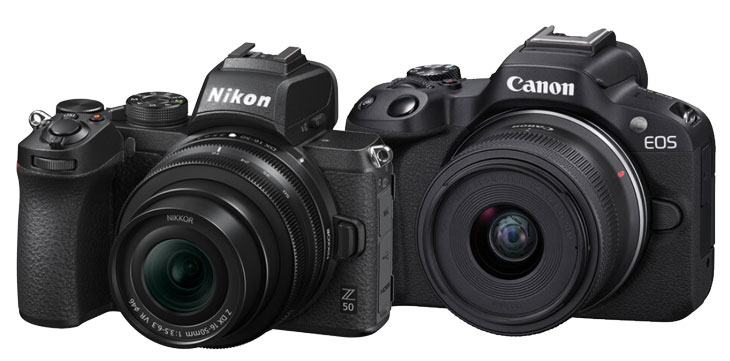
Latest comparison of the design part of the Canon R50 versus the Nikon Z50 camera. Canon R50 features a very ultra-compact body. The big difference between the two is weather sealing. If you shoot mostly outdoors, Z50 and even Z30 feature weather sealing in their body. No weather sealing is present in Canon R50.
Both cameras feature a built-in flash as well as an EVF. They are almost the same. The Canon R50 features a vari-angle display, while the Nikon Z50 features a limited-tilt display screen.
Canon R50 vs Nikon Z50 – Table of contents
Due to the design issue, the Canon R50 camera is more content-creator-friendly when compared to can Nikon Z50
also, see – Canon R10 vs Nikon Z50
Best Lenses for Canon R50 Camera
|
Canon R50 |
Nikon Z50 |
| Lens Mount |
Canon RF |
Nikon Z |
| Sensor Resolution |
Effective: 24.2 Megapixel |
Actual: 21.51 Megapixel
Effective: 20.9 Megapixel (5568 x 3712) |
| Image Sensor |
22.3 x 14.9 mm (APS-C) CMOS |
23.5 x 15.7 mm (APS-C) CMOS |
| Crop Factor |
1.6x |
1.5x |
| Image Stabilization |
None |
Digital (Video Only) |
| Built-In ND Filter |
None |
None |
| Capture Type |
Stills & Video |
Stills & Video |
1. Best Camera for Photography – Canon R50 vs Nikon Z50
Both cameras use an APS-C CMOS sensor. Nikon calls it DX and as you can see, physically the DX sensors are slightly larger compared to the Canon APS-C sensor.
- Nikon’s DX: 23.5 mm x 15.7 mm
- Canon’s APS-C: 22.3 × 14.9 mm
Okay, that doesn’t make too much difference, but since the sensor resolution of Nikon Z50 is 20MP and the sensor size is slightly larger, then due to these two factors automatically the low light performance of the camera upscales compared to others.
If you look at the ISO range chart, then you will see a massive difference between the ISO range of the Canon R50 camera and the Nikon Z50. The maximum ISO range of the Canon R50 camera goes up to ISO 51200 whereas the Nikon Z50’s ISO range is expandable up to 204800.
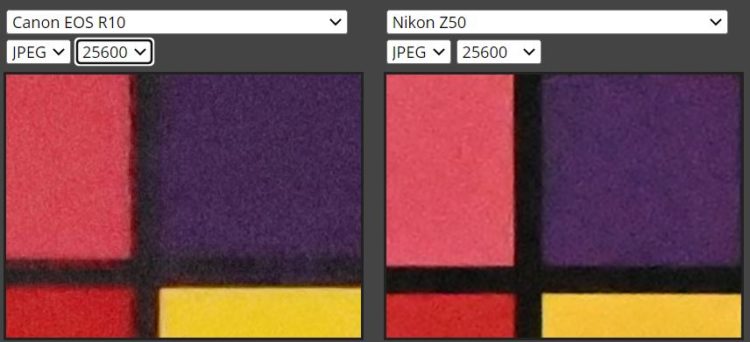
Since R10 samples are not available at this moment we are picking up, the Canon R10 (both Canon R10 and R50 share the same sensor)
Not only in words and numbers, let’s compare the two practices and try to find out the best camera between these two. As you can see, the ISO range of the Canon camera limits to 25600. Comparing the two, it’s very clear that the Nikon Z50 camera is able to preserve color details in a much better way. As you can see, the color box lines are not melting into each other. Canon R50 is not able to resolve colors at higher ISO ranges.
|
Canon R50 |
Nikon Z50 |
| Shutter Type |
Electronic Shutter |
Electronic Shutter, Mechanical Focal Plane Shutter |
| Shutter Speed |
Electronic Shutter
1/8000 Up to 30 Seconds
Electronic Front Curtain Shutter
1/4000 Up to 30 Seconds |
Electronic Front Curtain Shutter
1/4000 to 30 Seconds
Electronic Shutter
1/4000 to 30 Seconds |
| Bulb/Time Mode |
Bulb Mode, Time Mode |
Bulb Mode, Time Mode |
| ISO Sensitivity |
Photo/Video
100 to 32,000 (Extended: 51,200) |
Photo
100 to 51,200 in Auto Mode (Extended: 100 to 204,800)
Video
100 to 25,600 in Manual, Auto Mode |
| Metering Method |
Center-Weighted Average, Evaluative, Partial, Spot |
Center-Weighted Average, Highlight Weighted, Matrix, Spot |
| Exposure Modes |
Aperture Priority, Manual, Program, Shutter Priority |
Aperture Priority, Manual, Program, Shutter Priority |
| Exposure Compensation |
-3 to +3 EV (1/3 EV Steps) |
-5 to +5 EV (1/3, 1/2 EV Steps) |
| Metering Range |
-2 to 20 EV |
-4 to 17 EV |
| Continuous Shooting |
Electronic Shutter
Up to 15 fps for up to 28 Frames (JPEG) / 7 Frames (Raw)
Electronic Shutter
Up to 12 fps for up to 42 Frames (JPEG) / 7 Frames (Raw) |
Up to 11 fps at 20.9 MP
Up to 5 fps at 20.9 MP
Up to 4 fps at 20.9 MP
Up to 30 fps at 8 MP |
2. Autofocus – Canon R50 vs Nikon Z50
Both of them use completely different technology. Canon uses Dual Pixel CMOS autofocus technology and Nikon uses hybrid.
- The Canon R10 DPAF points are fabricated across the entire sensor, with a maximum of 4,503 points (single area mode) or 651 ZONES (when Tracking is enabled).
- The Z50 has 273 points that cover approximately 90% of the sensor. So technically we have less number of AF points inside the Nikon Z50 Mirrorless camera.
|
Canon R50 |
Nikon Z50 |
| Focus Type |
Auto and Manual Focus |
Auto and Manual Focus |
| Focus Mode |
Continuous-Servo AF, Manual Focus, Single-Servo AF |
Automatic, Continuous-Servo AF, Full-Time Servo, Manual Focus, Single-Servo AF |
| Autofocus Points |
Photo
Phase Detection: 4503
Video
Phase Detection: 3713 |
Phase Detection: 209 |
| Autofocus Sensitivity |
-4 to +20 EV |
-2 to +19 EV |
If you compare the autofocus points of the two, then you will see a massive difference. Don’t get demoralized after looking at the fewer number of points in Nikon Z50 camera. It is also highly usable and a perfect companion for general-purpose photography. You can also shoot sports and wildlife with this but don’t expect Hi-Fi 3D AF tracking performance from this camera.
If you are more into sports and wildlife photography and love to have a perfect camera under budget, then I highly recommend you to get the Canon R50 camera if possible, which has the fastest burst speed of 23 frames per second.
3. Best Camera – AF sensitivity – Canon R50 vs Nikon Z50
The stats say, the Canon R50 has a minimum sensitivity in the low light of -4EV, which is excellent for a class of camera like the Canon R10. The AF sensitivity of measured with an F1.2 lens is practically impossible to buy for beginners. So, it’s eq to – 2.5EV with an F2 lens.
Z50 has a rating of -2EV, or -4EV if you activate the Low Light AF mode (which is slower but can help in very dim light conditions). This data is measured with an F2 lens.
The R50 has a few extra features concerning autofocus, like focus bracketing and focus stacking which will interest macro photographers. So technically if he takes all the aspects here in terms of autofocusing performance of the two cameras then Canon R50 is a clear winner.
4. Best Camera for Sports and Wildlife – Canon R50 vs Nikon Z50
The Canon R50 camera doesn’t have any fully mechanical shutter, neither does the Nikon Z50. The Nikon Z50 specification says it has a mechanical focal plane shutter, but once we enter into the specs of the camera, we are able to witness only two shutters and these are:
Not able to see mention of any fully mechanical shutter. In the same way, even Canon R50 camera doesn’t have a fully mechanical shutter.
Now Canon is able to utilize its electronic shutter even when you are using the burst speed of the camera, but in Nikon Z50 we are limited to the use of only a mechanical shutter in high-speed burst mode. Since the camera doesn’t have a stacked CMOS sensor, there is literally no use in boosting up your shutter speed on electronic shutter steroids. You will have a massive rolling shutter effect in your images.
We highly recommend you go with Nikon Z50 for sports and wildlife photography. If you can spend more, then only Canon R10.
|
Canon R50 |
Nikon Z50 |
| Internal Recording Modes |
H.264/H.265/MPEG-4
UHD 4K (3840 x 2160) at 23.98/25/29.97 fps
1920 x 1080 at 23.98/25/29.97/50/59.94/100/120 fps |
H.264/MOV/MP4
UHD 4K (3840 x 2160) at 23.98/25/29.97 fps
1920 x 1080p at 23.98/25/29.97/50/59.94/100 fps |
| Broadcast Output |
NTSC/PAL |
NTSC/PAL |
| Recording Limit |
Stereo |
Stereo |

5. Best Camera for Video – Canon R50 vs Nikon Z50
Both can record 4K videos up to 30 frames per second. Due to the use of a low light sensitive sensor in Nikon Z50, you are able to capture uncontrolled light videos in a better way. Even at higher ISO, Nikon Z50 camera is able to preserve more details, as we have already seen in the ISO test.
The Canon R50 has an amazing ability to record 10-bit HDR PQ videos. But at the same time, you need additional lights to get the maximum out from the R50 sensor. Otherwise, in an uncontrolled light environment, the quality goes even below that of Nikon Z50’s 8-bit output.
So if you are working in an uncontrolled light environment where you do not have any access to dedicated lights, you should buy the Nikon Z50. Otherwise, if you’re working with lights and in your studio, then Canon R50 is a better choice.
6. Content creators and bloggers
The best camera for you is Canon R50 due to its flexible vari-angle display screen. Nikon Z50’s screen rotates in a 180-degree fashion which is not that much usable. It’s better to buy Canon R50.
|
Canon R50 |
Nikon Z50 |
| Battery Type |
1 x LP-E17 Rechargeable Lithium Polymer, 7.2 VDC, 1040 mAh |
1 x EN-EL25 Rechargeable Lithium-Ion, 7.6 VDC, 1120 mAh (Approx. 300 Shots) |
| Tripod Mounting Thread |
1 x 1/4″-20 Female (Bottom) |
1 x 1/4″-20 Female (Bottom) |
| Dimensions (W x H x D) |
4.6 x 3.4 x 2.7″ / 116.3 x 85.5 x 68.8 mm |
4.98 x 3.68 x 2.36″ / 126.5 x 93.5 x 60 mm |
| Weight |
13.2 oz / 375 g (With Battery, Recording Media)
11.6 oz / 328 g (Body Only) |
13.93 oz / 395 g (Body Only)
|
Help us to get a Barista Coffe
Latest Price of Nikon Z50 B&H | Amazon.com
Get Canon R50 From Amazon.com | B&H Store
|
KEEP THIS BLOG ALIVE - Support New Camera Buy Canon Lenses, Buy Music CD or Digital Camera at amazon it helps this site, and you do not pay anything extra, it is just a way to help support this site.

|























